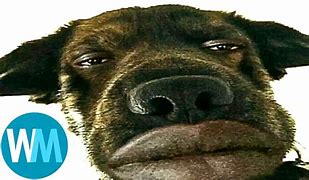What is a dog?
The dog (Canis familiaris or Canis lupus familiaris) is a domesticated descendant of the wolf. Also called the domestic dog, it is derived from extinct gray wolves, and the gray wolf is the dog's closest living relative. The dog was the first species to be domesticated by humans. Hunter-gatherers did this over 15,000 years ago in Oberkassel, Bonn, which was before the development of agriculture. Due to their long association with humans, dogs have expanded to a large number of domestic individuals and gained the ability to thrive on a starch-rich diet that would be inadequate for other canids.
Senses
Like most mammals, dogs have only two types of cone photoreceptor, making them dichromats. These cone cells are maximally sensitive between 429 nm and 555 nm. Behavioural studies have shown that the dog's visual world consists of yellows, blues and grays, but they have difficulty differentiating red and green making their color vision equivalent to red–green color blindness in humans (deuteranopia). When a human perceives an object as "red," this object appears as "yellow" to the dog and the human perception of "green" appears as "white," a shade of gray. This white region (the neutral point) occurs around 480 nm, the part of the spectrum which appears blue-green to humans. For dogs, wavelengths longer than the neutral point cannot be distinguished from each other and all appear as yellow. Dogs use color instead of brightness to differentiate light or dark blue/yellow. They are less sensitive to differences in grey shades than humans and also can detect brightness at about half the accuracy of humans.
Breeds
Dogs are the most variable mammal on earth with around 450 globally recognized dog breeds. In the Victorian era, directed human selection developed the modern dog breeds, which resulted in a vast range of phenotypes. Most breeds were derived from small numbers of founders within the last 200 years, and since then dogs have undergone rapid phenotypic change and were formed into today's modern breeds due to artificial selection imposed by humans. The skull, body, and limb proportions vary significantly between breeds, with dogs displaying more phenotypic diversity than can be found within the entire order of carnivores. These breeds possess distinct traits related to morphology, which include body size, skull shape, tail phenotype, fur type and colour. Their behavioural traits include guarding, herding, and hunting, retrieving, and scent detection. Their personality traits include hypersocial behavior, boldness, and aggression, which demonstrates the functional and behavioral diversity of dogs. As a result, present day dogs are the most abundant carnivore species and are dispersed around the world. The most striking example of this dispersal is that of the numerous modern breeds of European lineage during the Victorian era.
Intelligence
Researchers have tested dogs' ability to perceive information, retain it as knowledge, and apply it to solve problems. Studies of two dogs suggest that dogs can learn by inference and have advanced memory skills. A study with Rico, a Border Collie, showed that he knew the labels of over 200 different items. He inferred the names of novel things by exclusion learning and correctly retrieved those new items immediately and four weeks after the initial exposure. A study of another Border Collie, Chaser, documented his learning and memory capabilities. He had learned the names and could associate by verbal command over 1,000 words.Dogs can read and react appropriately to human body language such as gesturing, pointing, and human voice commands.


